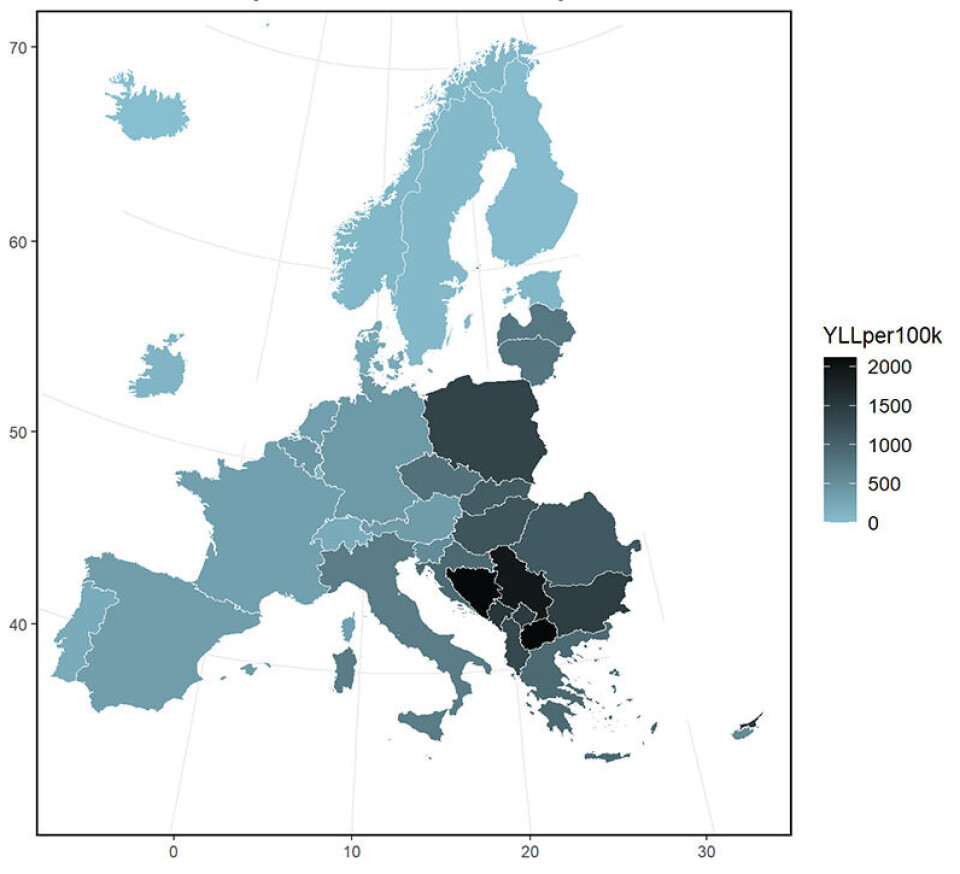THIS CONTENT IS BROUGHT TO YOU BY NILU - Norwegian Institute for Air Research - read more

Air pollution levels are still too high across Europe
Air pollution is posing a significant threat to our health.
According to the latest European Environment Agency (EEA) air quality health assessment, 253,000 deaths could have been avoided in the EU if the fine particulate matter (PM2.5) concentrations had met WHO recommendations.
Exposure to air pollution causes or aggravates certain diseases like lung cancer, heart disease, asthma, and diabetes, according to new estimates of health impacts.
Further measures to reduce air pollution to WHO guideline levels would prevent these 253,000 attributable deaths. It would also decrease the number of individuals suffering from chronic health issues caused by air pollution, including diseases like diabetes and asthma.
The EEA briefing presents the latest information, estimated for the year 2021, of the harm to human health caused by three key air pollutants: fine particulate matter, nitrogen dioxide, and ozone.
Attributable deaths remain too high
Between 2005 and 2021, the number of deaths in the EU attributable to fine particulate matter, one of the most damaging air pollutants, fell by 41 per cent.
Still, air pollution continues to be the top environmental health risk to Europeans, causing chronic illness and attributable deaths, especially in cities and urban areas.
According to the latest EEA estimates, at least 253,000 deaths in the EU in 2021 were attributable to exposure to PM2.5 pollution above the WHO recommended concentration. Nitrogen dioxide (NO2) pollution above the WHO recommended concentration led to 52,000 deaths.
Both PM2.5 and NO2 estimations consider long-term exposure. Short-term exposure to ozone (daily) led to 22,000 attributable deaths in the EU.
Air pollution also causes ill health and adds significant costs to health care systems. These WHO recommended concentrations are set based on the level of pollution above which there is strong evidence of associated health effects.
In Norway, it was estimated that 293 and 87 deaths were attributed to long-term exposure to PM2.5 and NO2, respectively. Short-term exposure to ozone is responsible for 79 deaths.
The assessment is done for individual pollutants to avoid larger uncertainties in the estimations, in particular double counting.

Health impacts of key air pollutants on disease
This year's assessment includes a new element: Measuring the health burden related to specific diseases that are aggravated or cause by air pollution.
The total health burden associated with each of these diseases depends not only on the attributable deaths linked to the disease, but also on the health burden of living with the effects of the disease on a daily basis.
For some diseases, such as ischemic heart disease and cancer, the majority of the health burden is linked to mortality. However, there is also a significant health burden associated with living with the debilitating health effects of diseases such as diabetes and asthma, typically over many years or decades.
Therefore, when we consider the health effects of air pollution, it is important to look beyond just the number of attributable deaths. We should also consider the long-term impacts these diseases, like asthma, have on the daily quality of life of European citizens.
PM2.5 exposure-related illnesses:
- Ischemic heart disease: 87,893 attributable deaths
- Stroke: 64,171 attributable deaths
- Diabetes mellitus: 42,671 attributable deaths
- Chronic obstructive pulmonary disease: 19,233 attributable deaths
- Lung cancer: 18,334 attributable deaths
- Asthma: Less than 10 attributable deaths
NO2 exposure-related illnesses:
- Diabetes mellitus: 18,227 attributable deaths
- Stroke: 17,937 attributable deaths
- Asthma: 788 attributable deaths

This content is paid for and presented by NILU - Norwegian Institute for Air Research - read more
This content is created by NILU's communication staff, who use this platform to communicate science and share results from research with the public. NILU is one of more than 80 owners of ScienceNorway.no. Read more here.
More content from NILU:
-
Summer in Central Europe: Drought and wildfires to be expected
-
How do you design a healthier place to live?“I would prioritise easy, car-free access to everything you need in your daily life"
-
Fires in tropical forests affect more than just the forests
-
Engineer Sam Celentano found 222 grams of gold in a laboratory. What was it doing there?
-
Researchers have discovered how biological particles affect the clouds over the Arctic
-
Smoke from Canada is still coming in over Norway




































